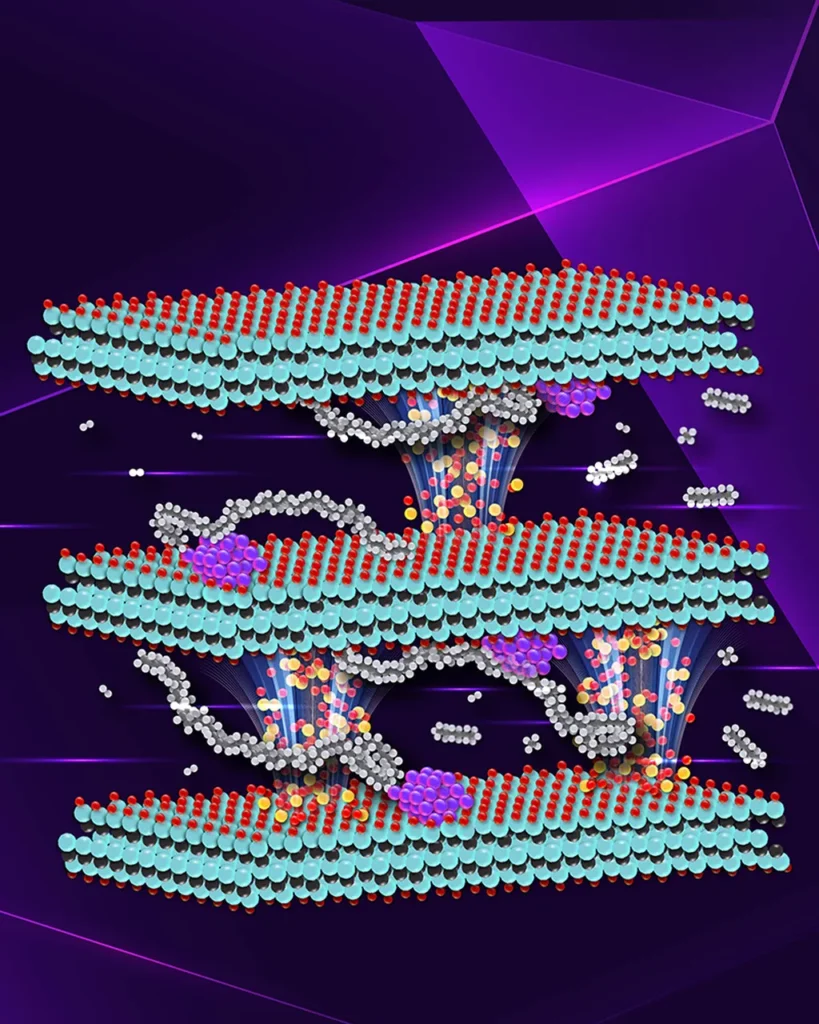In the relentless battle against microplastics pollution, a team of researchers from the Department of Physics at The University of Hong Kong has made a significant stride. Led by Atta Ur Rehman, the team has developed a novel MXene photocatalyst that could potentially revolutionize the way we handle plastic waste, particularly polyolefins, which are notoriously difficult to degrade due to their stable carbon-carbon backbones.
The study, published in the Journal of Physics Materials (JPhys Materials), explores the use of Ti₂CTₓ MXene for photocatalytic conversion of polyethylene (PE) plastics. The results are promising, with the MXene photocatalyst achieving complete mineralization of pristine PE and environmental PE microplastics in aqueous solutions without the need for NaOH. The dominant reaction product in this case was CO₂.
However, the story doesn’t end there. When the team introduced 5 M NaOH to the mix, the photocatalyst’s activity took an interesting turn. Instead of mineralization, the process shifted towards hydrogen production, with an activity exceeding 500 μmol g⁻¹ cat. This dual functionality could have significant implications for the energy sector, offering a potential pathway for converting plastic waste into valuable resources.
“We were pleasantly surprised by the results,” said Rehman. “The MXene photocatalyst not only showed high efficiency in degrading microplastics but also demonstrated the ability to produce hydrogen, a clean energy source, under specific conditions.”
The potential commercial impacts of this research are substantial. The energy sector is constantly seeking sustainable and efficient ways to produce hydrogen, a clean fuel that could play a pivotal role in the global transition to renewable energy. Meanwhile, the environmental sector is grappling with the growing problem of microplastics pollution. This research offers a glimmer of hope, presenting a potential solution that could address both issues simultaneously.
Moreover, the study opens up new avenues for future research. As Rehman noted, “Our findings suggest that MXene photocatalysts could be further optimized for enhanced activity and selectivity. There’s a lot of room for exploration in this area.”
The research also highlights the importance of interdisciplinary collaboration. By bringing together expertise from physics, chemistry, and environmental science, the team was able to tackle a complex problem from multiple angles, leading to a breakthrough that could shape the future of waste management and energy production.
In the words of Rehman, “This is just the beginning. We’re excited to see where this research will take us and the positive impact it could have on our environment and energy sector.”
As we look to the future, the potential of MXene photocatalysts in addressing microplastics pollution and hydrogen production is a beacon of hope. It’s a testament to the power of scientific innovation and the potential it holds for creating a more sustainable world.

